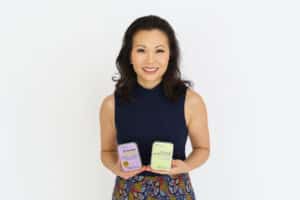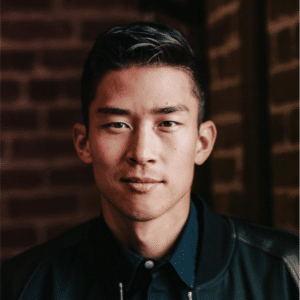The wait between albums felt like forever, but absence only fueled our obsession. When the new music video finally dropped, my friends and I devoured it like greedy, squealing piglets. We practiced the new choreography until we grew breathless from dancing and laughing at our many mistakes.
The object of our affection was not Bangtan Boys (BTS), but another beautiful South Korean boy band named High-Five of Teenagers (H.O.T.). It was 1996, and Korean pop, or K-pop, was virtually unknown in the States. However, living in an Asian-populated suburb of Southern California meant there were enough of us Korean American middle school girls to band together and worship H.O.T.

The boys donned fuzzy, brightly-colored overalls, earmuffs, and mittens for their single “Candy.” We bought knock-offs of their outfits at a nearby Korean stationery store using our immigrant parents’ hard-earned money. They indulged us, happy to see us practicing our Korean.
We not only wore the itchy getups at home, but also to school. People had no idea why we were dressed in poorly made winter wear in the Southern California heat. Their bafflement made us feel like an exclusive in-group who happened to have the dress code of Santa’s elves.
Upon entering high school, my relationship with K-pop began to change alongside my relationship with my parents. Gone were the days of winning my parents’ approval by memorizing lyrics to K-pop songs. I now had to get into a top university, not party or date, and obey their directives with no questions asked. Given that I was already studious and compliant, I didn’t fight against their rules. Instead, I fought against their view of me as a perpetual child rather than an adolescent desperate to grow into her own.
K-pop similarly restricted its stars from growing up. Euny Hong describes in The Birth of Korean Cool that a K-pop star is expected to be a chak han kid, “a good kid, with the implication of innocence…and it refers more to conforming with traditional social values rather than spiritual or metaphysical goodness.” Seeing K-pop stars comply with expectations of childlike purity and docility felt a little too close to home. So, I distanced myself from all things Korean, thinking that trying so hard to be a chak han kid would never be cool.
So you can imagine my shock when BTS became the first South Korean pop group to blast their way to the top of the U.S. Billboard Hot 100 singles chart with “Dynamite” in 2020. Since then, they’ve churned out more number one hits like “Life Goes On,” “Butter,” and “Permission to Dance”. Their trifecta of pretty harmony, even prettier hair and fashion, and jaw-dropping synchronized choreography have led to the septet being dubbed as the new “Kings of Pop”.

They’ve accomplished what I thought was impossible here—being cool by trying to be good Korean kids. Since coming together as a band in 2010, they’ve put in well over 10,000 hours to look, sound, and act the part of wholesome role models. Their hit songs promote positivity and unity, glowing with innocence with lyrics like “Shoes on, get up in the morn’ / Cup of milk, let’s rock and roll.” As Kim Taehyung, or V, put it succinctly during his introduction in a 2019 Stephen Colbert interview, “Hi guys, my name’s V, and I’m a good boy.”
With the world eclipsed by a pandemic, perhaps what we needed in 2020 was simple goodness. I’m proud that BTS made wholesomeness cool, and their light-hearted songs transport me back to when friendships meant the world and joy was what we lived for. My parents are proud of BTS too, similarly to why they’re proud of me—they don’t really get what we’re doing to be successful in the U.S., but they recognize that at our core, we’re trying to make our families and culture proud. They hear our effort, and it sounds like a love song.



